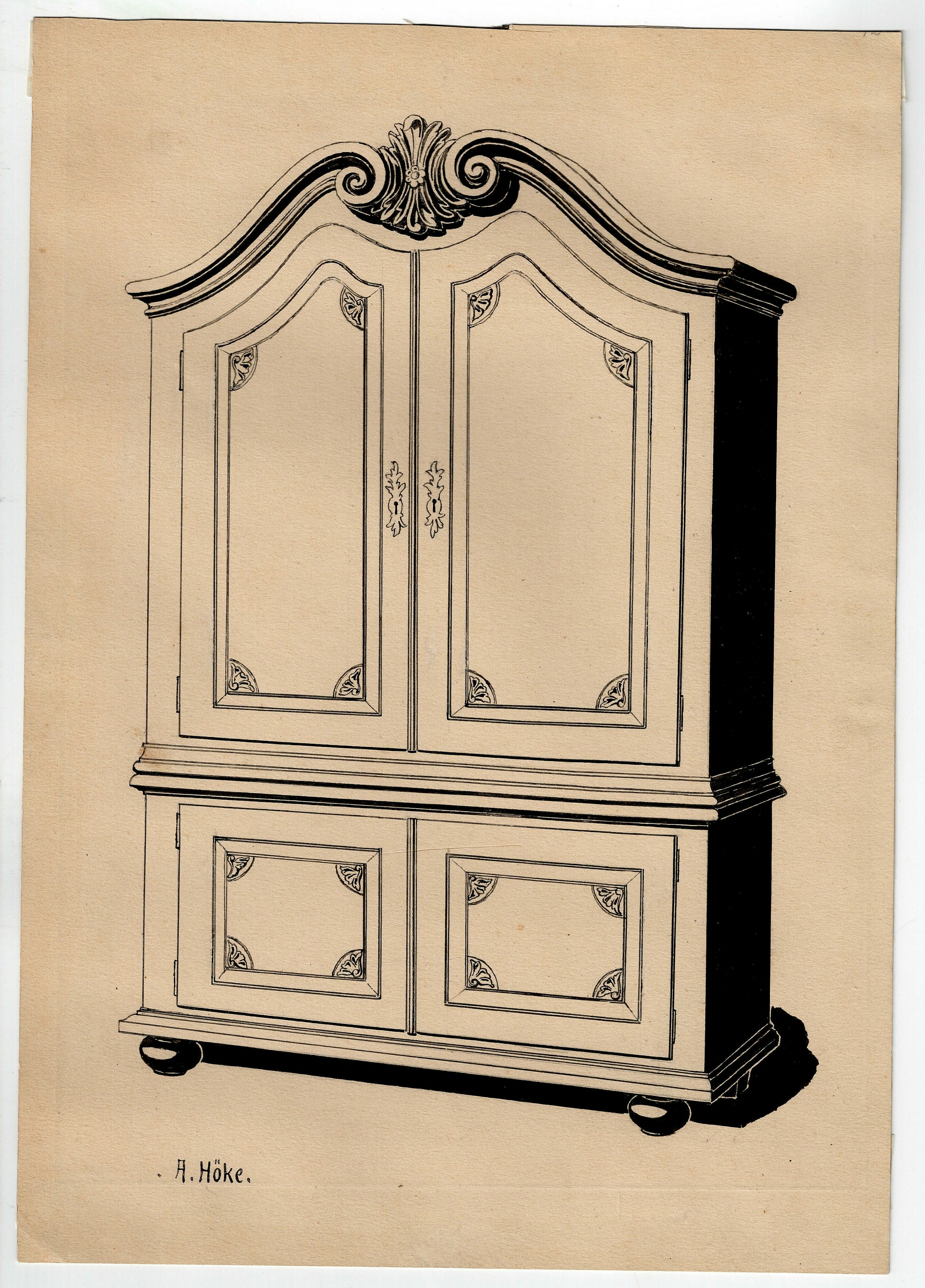Tuschezeichnung von Friedrich August Höke (1857-1931), signiert "A. Höke";
Rückwärtig beschriftet mit: "Barockschrank im Hause Langestr. 30 (Hotel Köppelmann). Stammt aus der Mitte des 18. Jahrh. Aus Eichenholz gearbeitet, vorzüglich erhalten. Zweistöckig. Bemerkenswert durch einen eigenartige, ziemlich weit vorspringende Volutenbekrönung, die oberen Ränder der Türflügel sind der Rundung der Bekrönung geschickt angepasst. Zwischen die Einwölbungen der Wülste der Abschlussleiste sind charakteristische Formen (lat. c.) des Rokokostils gesetzt, ebenso an den Ecken der Türfüllungen. Übergang vom Barock zum Rokoko."
en

